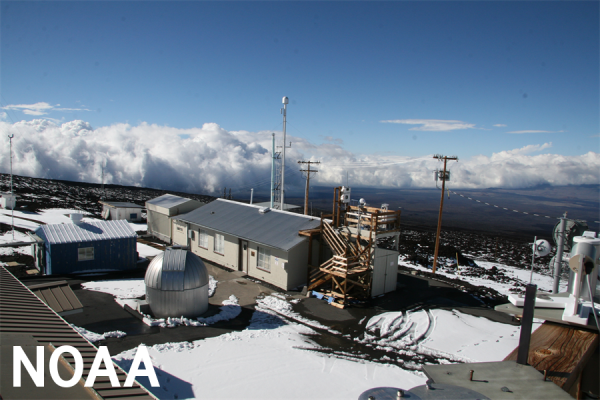Carbon dioxide measured at NOAA’s Mauna Loa Atmospheric Baseline Observatory peaked for 2022 at 421 parts per million in May, pushing the atmosphere further into territory not seen for millions of years, scientists from NOAA and Scripps Institution of Oceanographyoffsite link at the University of California San Diego announced today.
NOAA's measurements of carbon dioxide at the mountaintop observatory on Hawaii’s Big Island averaged 420.99 parts per million (ppm), an increase of 1.8 ppm over 2021. Scientists at Scripps, which maintains an independent record, calculated a monthly average of 420.78 ppm.
“The science is irrefutable: humans are altering our climate in ways that our economy and our infrastructure must adapt to,” said NOAA Administrator Rick Spinrad, Ph.D. “We can see the impacts of climate change around us every day. The relentless increase of carbon dioxide measured at Mauna Loa is a stark reminder that we need to take urgent, serious steps to become a more Climate Ready Nation.”
CO2 pollution is generated by burning fossil fuels for transportation and electrical generation, by cement manufacturing, deforestation, agriculture and many other practices. Along with other greenhouse gases, CO2 traps heat radiating from the planet’s surface that would otherwise escape into space, causing the planet’s atmosphere to warm steadily, which unleashes a cascade of weather impacts, including episodes of extreme heat, drought and wildfire activity, as well as heavier precipitation, flooding and tropical storm activity.
Read more at: NOAA
The Mauna Loa Observatory in Hawaii is a benchmark site for measuring carbon dioxide, or CO2. NOAA and the Scripps Institution of Oceanography make independent measurements from this station on the slopes of Mauna Loa volcano. (Photo Credit: NOAA)


